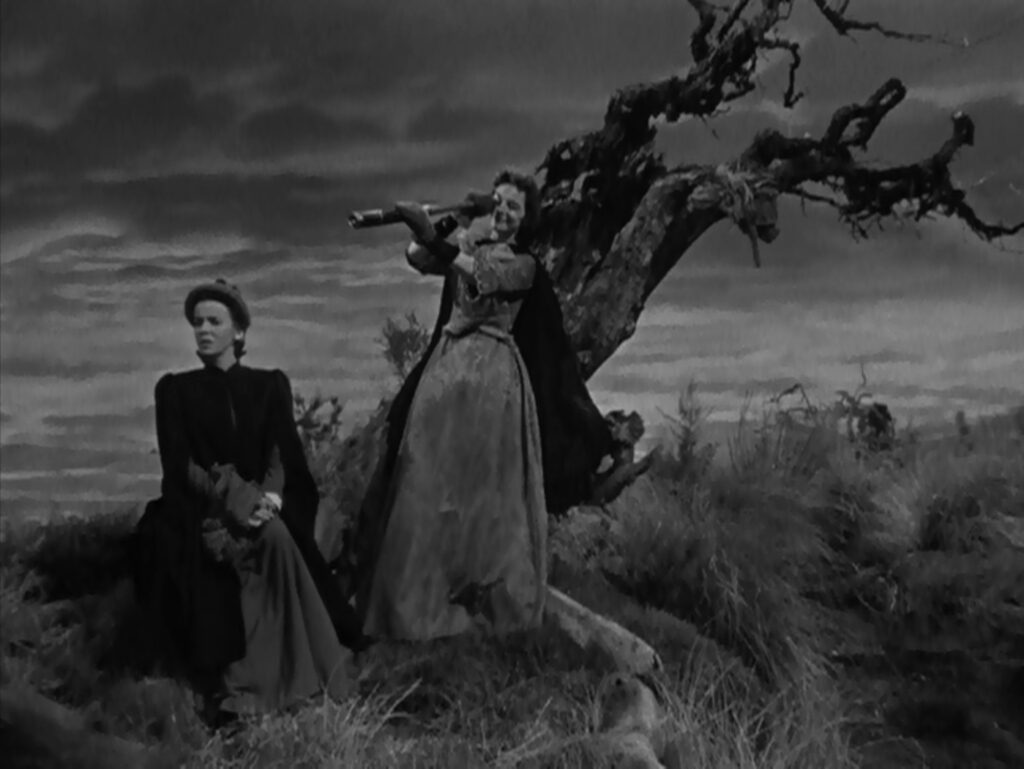
Ladies in Retirement
1941, directed by Charles Vidor
Anyone who watches Ladies in Retirement for the first time must surely be surprised to find a wild marsh in the opening credits with a stork, cranes, dead trees, and rotting wood. The scene looks more like a wildlife film or a romantic horror movie than anything the title might conjure up. Every time the movie leaves the cottage, the desolate vista is dampened with rain or low-lying fog. If the intent was to convey the house’s isolation, or even to add a bit of atmosphere, it would seem that the art director went overboard… but there is after all a certain logic to it. The swampy landscape looks like a place where things get stuck, and as it turns out, that’s a fitting comment on the story.
First of all, Leonora Fiske’s cottage tends to draw people in without letting them go. Ellen’s sisters are only supposed to stay a few days, but even after Miss Fiske kicks them out and fires Ellen, the three of them linger on. Albert shows up briefly in the first scene, but necessity draws him back, and he has no other place to go until Ellen gets him passage to Canada, at which point he doesn’t want to leave anymore. Miss Fiske remains there too after she’s killed, entombed in the big stone oven that forms the film’s centerpiece. The oven is like a black hole that everything revolves around, and the house is its event horizon, at least until the end when its bonds are loosened.
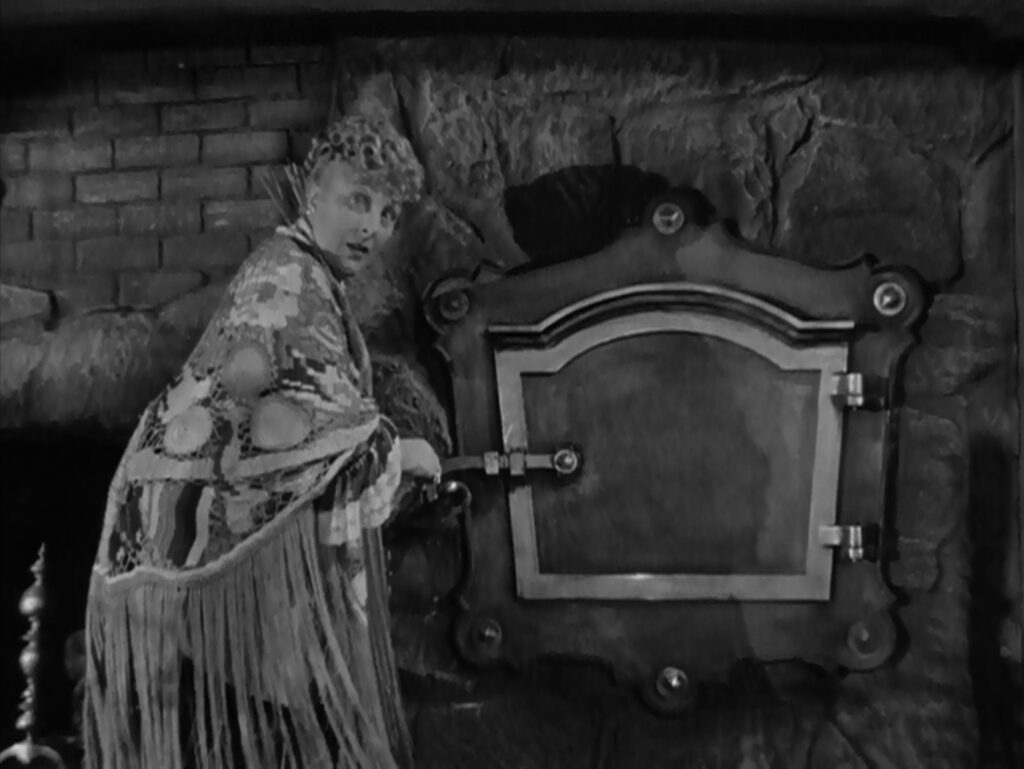
The swamp and the house are like traps, and so is the situation Ellen Creed finds herself in when she has no place to go and no means of caring for her sisters. Most films about murder treat the crime as either a moral failing or a result of uncontrolled passions, but Ellen neither wishes harm on her victim nor does she strangle her in a fit of madness. She simply cannot see any other way to proceed. We don’t have to approve of her action to appreciate what a bind she’s in. It’s not as if we can blame Miss Fiske either… she’s an ordinary woman of modest privilege whose generosity gets stretched to its limit. She and Ellen are both compassionate and capable of understanding, yet like any human being each has her breaking point. The situation is absolutely intractable, yet it’s not unlifelike. Life occasionally puts us in traps with no good way out, and audiences in 1941, when the world was being dragged into war, would have appreciated that.
Just as the oven gives the film a physical center, the act of murder gives it a dramatic center. That single event reverberates forward and backward, echoing in the gestures, staging, and music. About five minutes into the film Ellen hooks a pearl necklace around Miss Fiske’s neck, foreshadowing the strangulation to come, and the event is restaged later when Albert gets Lucy to sit behind the piano in Miss Fiske’s wig to unnerve Ellen. Albert foreshadows the murder when he jokes about the oven: “Proper tomb, isn’t it?” The “Willow, tit-willow” song from The Mikado that Miss Fiske plays in her final moments also appears once before the murder and twice after. The way Ellen creeps down the stairs behind her victim echoes twice afterward, first when Ellen comes down behind her whispering sisters, and again when Lucy sneaks down after eavesdropping on Ellen’s incriminating conversation with Albert. There’s even a symmetry to the household situation before and after the murder – just as Miss Fiske suffered her two unwanted guests, Ellen must endure Albert’s visit. All of these symmetries reinforce the crime’s position at the heart of the movie, adding a sense of inevitability both to the sin and to its punishment. As the new mistress of the house, Ellen takes over Leonora Fiske’s role and her destiny as well. Albert insinuates that she’ll be executed for her crime.
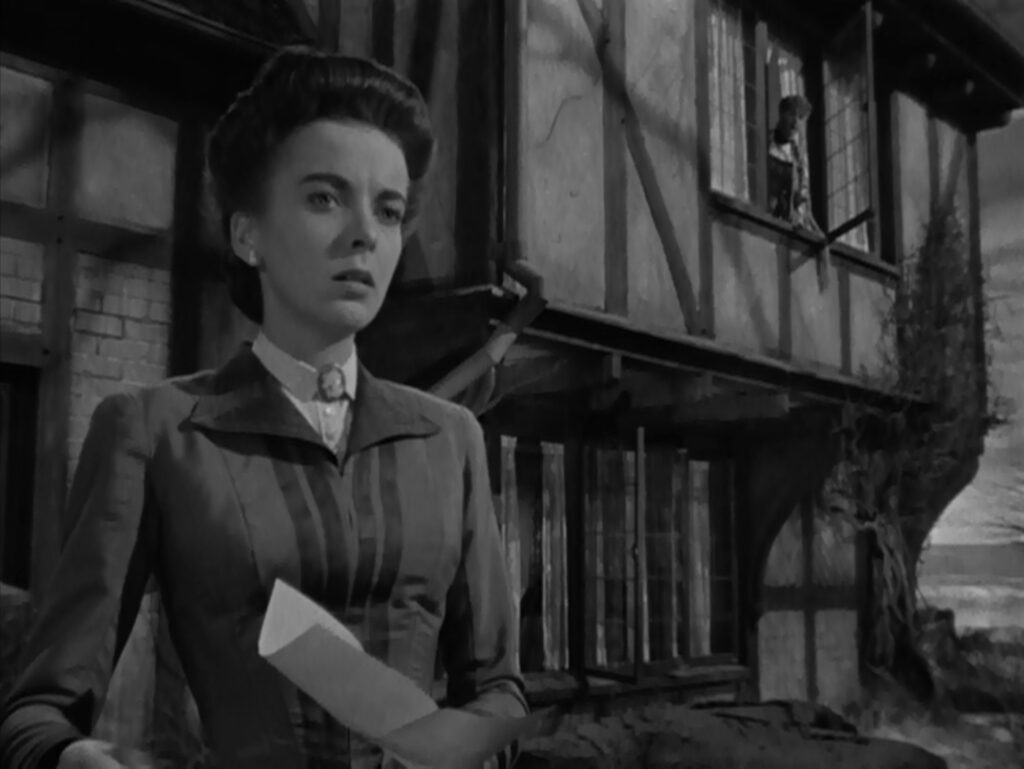
Ladies in Retirement is based on a 1940 stage play. It’s a product of its time, but its view of human failings is broad enough to be timeless. Because the crime is so unavoidable, and because we’re given enough to understand all the conflicting motives, we should be able to look more charitably not only at human behavior but also at the failings of human societies. Among the six main roles there are fifteen individual relationships, and the movie defines each one so precisely that (maybe apart from Lucy vis-a-vis Emily and Louisa) any viewer can easily say what any character feels about any other; and among those fifteen relationships only a single wrinkle between Emily and Miss Fiske unravels everything. If this combination of personalities, with a minimum of testosterone – some of them difficult, to be sure, but none of them odious – can be so fragile, it’s a wonder that more groupings of humans don’t end up in murder.
The story blends elements from the whole history of Western drama. Like a Greek tragedy, a single fault (hamartia) in the order of things triggers inevitable chaos and undeserved misfortune, ending in a purifying discharge of emotions (catharsis). Like a 17th century Christian morality play, each character is motivated by a particular pride: Miss Fiske has her position, Ellen has her integrity, Albert has his charm, Lucy has her good looks, Emily has her strength, and Louisa is proud of the way she views the world, always looking through a telescope or observing everyone around her. Like a modern drama, each person is an insignificant atom hoping to find a shred of meaning in a vast world. Ellen and Lucy are servants, Emily and Louisa are outcasts regarded as abnormal, Albert is a thief, and Miss Fiske is a retired chorus girl without social standing.
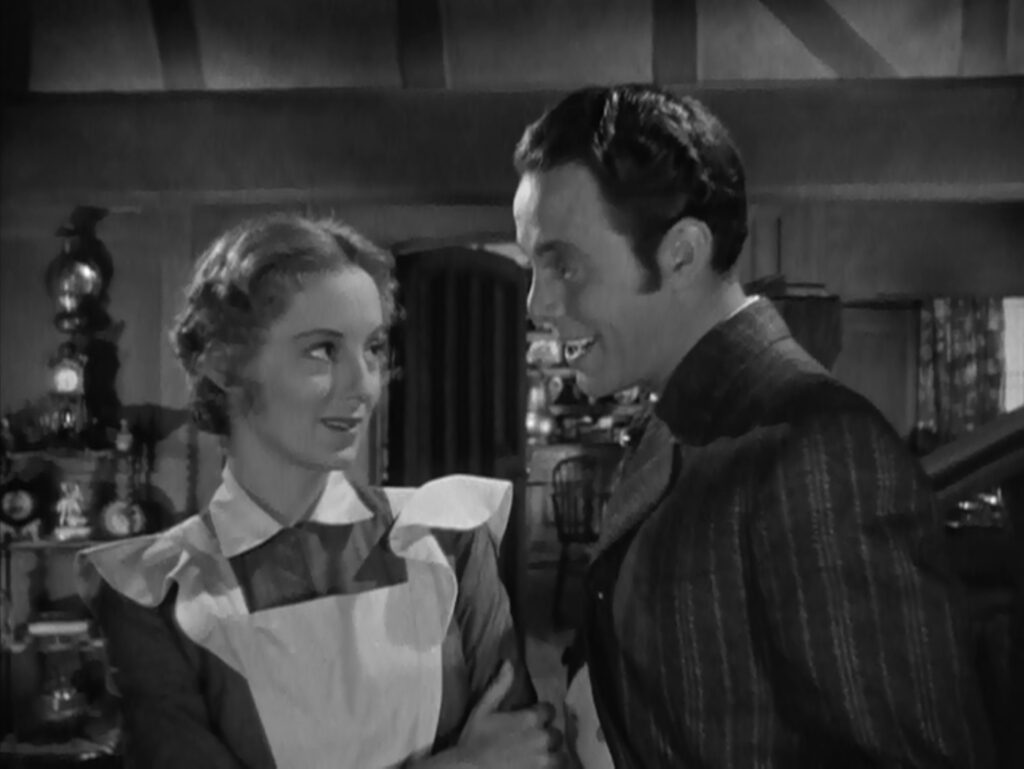
If audiences today miss the point of Ladies in Retirement, it’s likely because movies have taught us to judge characters too quickly. In a generic crime film we’re often expected to sort out the good characters from the bad, but doing so here only obscures the film. It might be easy to write Ellen off because she’s a murderer, to write her sisters off because they’re so stubbornly annoying, or to write off Miss Fiske because she’s so insensitive to her own advantages, having paid a bargain for Ellen’s family’s belongings in their bankruptcy then taking Ellen in as a servant. We don’t have to like the characters’ faults, but the habit of judging people inflexibly handicaps not only our viewing but also our relationships in the real world.
In fact the movie takes great care to characterize everyone fairly. Ellen may be a murderer, but she is loathe to commit the crime, and afterward she lights candles for Miss Fiske, calling her a “friend” with evident sincerity. Her sisters may be irritating, but in Albert’s presence they become endearing. Albert may be a thief, but he wants to redeem himself, and he gets along with everyone so well. Miss Fiske may think too highly of her position, but she’s kind to Ellen, and she lets Emily and Louisa stay longer than most people would.
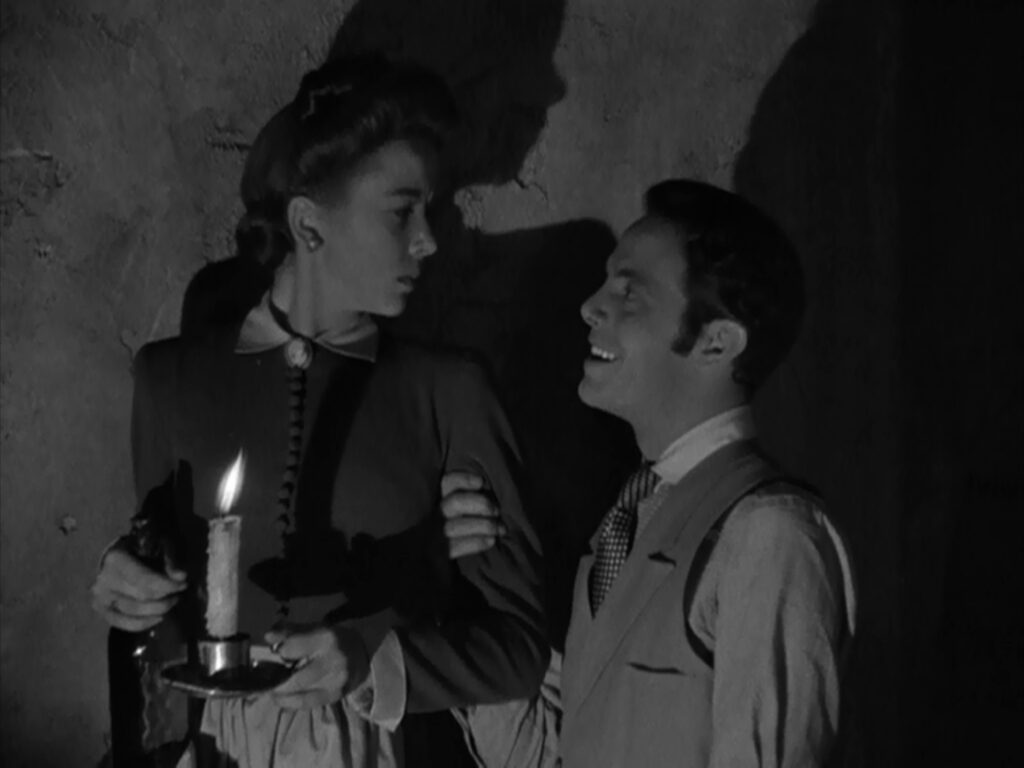
Each character has a certain pride, and the other cardinal sins are distributed evenly among them… yet each also embodies one of the seven cardinal virtues. Albert is avaricious, stealing from his employer, but he’s also kind to everyone. Ellen, who objects to Miss Fiske’s wealth, is a bit envious, but she’s also temperate, forbidding her sisters to drink. Leonora Fiske’s love for chocolates is a token of gluttony, but she’s charitable to Albert when he needs money. Emily is prone to wrath, but she’s diligent at cleaning up the marshes. Louisa is slothful, always watching the world passively, but she’s also patient. Lucy, whose resistance to Albert breaks down so quickly, combines lust with the humility of a dutiful servant. As for the remaining cardinal virtue, everyone remains chaste throughout the film just as they all share in the vice of pride. The pattern is not entirely neat – Albert flirts as much as Lucy, and Miss Fiske’s charity has its limits – but it confirms the humanity of each character.
Politics and religion always have answers for the intractability of life’s problems, and the movie recognizes both approaches to Ellen’s problem. At the piano Albert sings, “It’s the same the whole world over, it’s the poor what gets the blame, while the rich has all the pleasures….” and anyone can appreciate the fruits of inequality in the backstory between Miss Fiske and Ellen. Of course we can blame Ellen’s situation on structural faults in society. There should be a solution for her sisters that grants them more autonomy than their previous guardian in London did. Religion also offers insight… on the carriage ride back from church Louisa and Bates quote the sermon: “The wicked flee where no man pursueth, but the righteous are as bold as a lion.” As bold as Ellen may have been, there was a certain cowardice in a murder motivated by fear for her lack of options. Later Ellen shows her own religious insight when she says, “Hell is like the Kingdom of Heaven. It’s within.” In the end we’re left to understand that the nuns will likely care for Ellen’s sisters – religion supplies the social structure that secular society failed to, yet one wonders what would have happened had Ellen not sacrificed herself. The resources of religious charity are finite, after all.
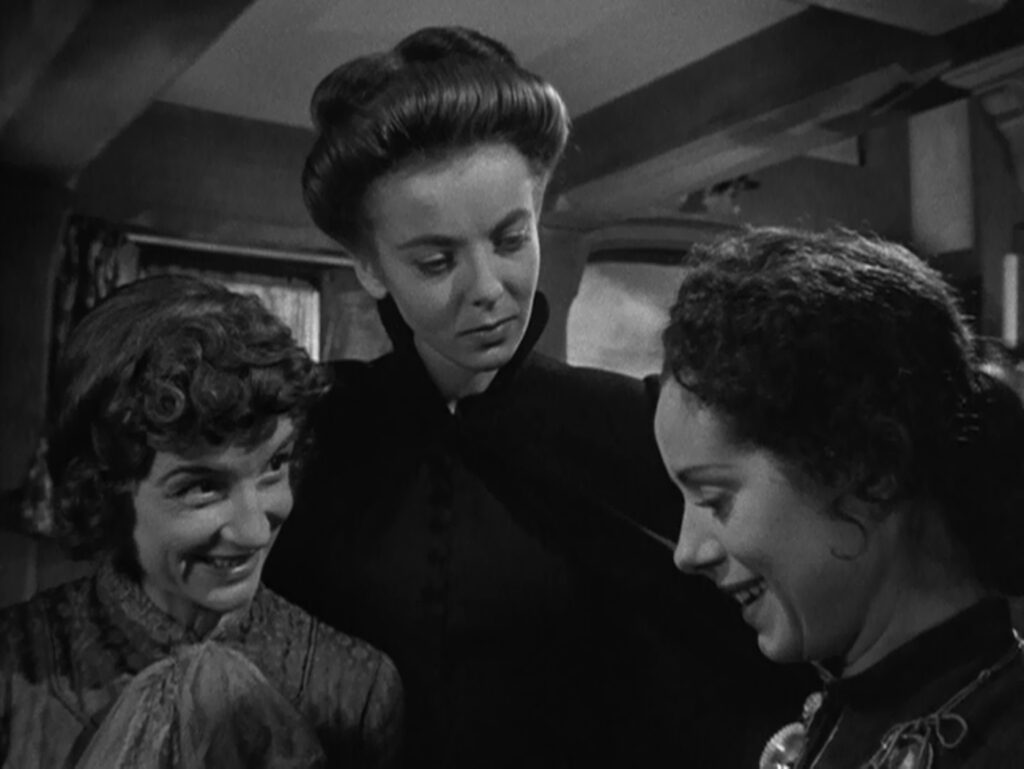
Ladies in Retirement never denies the good will that comes from secular and religious directions, but that good is not always enough. By confronting us with the sometimes insoluble difficulties of life, the movie should bring us to a more adult understanding of the world’s complexity.
CONNECTIONS:
The Cabinet of Dr. Caligari – Guilt over killing a friend; murder only shown in part; artificial setting that comments on the story
Rebecca – Hollywood film about economic and social inequality set in England
The Hand of the Devil – Seven deadly sins linked to a group of characters
Spellbound – Murderer argues that it’s easier to kill a second time
A Letter to Three Wives – Group of characters differentiated systematically along a matrix of qualities
The Servant – Story of house servants upsetting the prescribed order of power
Andrei Rublev – Seven deadly sins as a structural device
La cérémonie – Hamartia and catharsis in a story of a maid killing her employer(s)
Get Out – Single moment echoed in various forms across the whole story
Parasite – Servant(s) gradually take over a household by inviting family inside; set in a house with a secret compartment or chamber